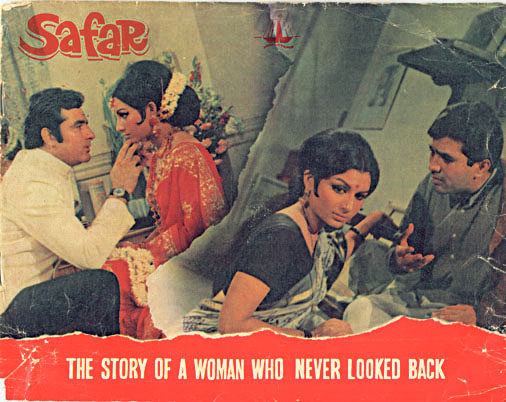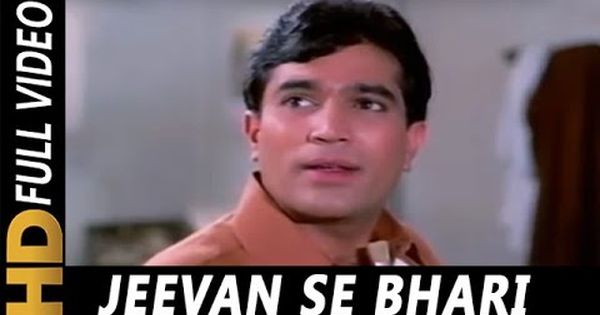Raaga Based Song of the Day: Jeevan se bhari teri aankhen
Raag Malgunji, Taal Kaherava
We have completed fifteen days of Raaga Based Songs of the Day. Our first post in the series was titled ‘Raaga Based Song Of The Day #1’ and the song was a Mohammad Rafi and Lata Mangeshkar song from the 1970 Shakti Samanta movie Pagla Kahin Ka: Tum mujhe youn bhula na paoge. It is in Raag Jhinjhoti, Tal Kaherava.
Our fifteenth post or the last post was titled ‘Raaga Based Song Of The Day #15’ and the song was an Asha Bhosle song from the 1960 RK Rakhan movie Kalpana: Beqasi hadd se jab guzar jaaye. It is in Raag Desh and Khammaj, Tal Dadra.
This blog has a number of posts on Raaga based songs in Hindi movies titled similarly; for example: ‘The Best Raaga Based Songs in Hindi Movies – Raaga Yaman – Part I’.
Every month, on my music and song group on Facebook: ‘Yaad Kiya Dil Ne’, I conduct a Fest on a theme. It lasts for two days. Participants can put up three songs per day on the theme. This month’s theme is (the June Fest is going on now; today is the second day) Koi. I conduct and judge. And at the same time, after everyone puts up his/her posts, I put up my posts as a participant, but, out of contest.
My today’s Raaga Based Song is my first entry on the second day of June Fest. Here goes:
Keyword: In the first line of first stanza: Tasveer banaaye kyaa koi.
As soon as one starts talking about Raag Malgunji, the first song that comes to mind is RD Burman’s first bandish with Lata Mangeshkar: Ghar aaja ghir aaye badra sanwariya. That was in Rupaktal. This one is in Kaherava. Please remember that a Raag sets the mood, time and season and Tal sets the rhythm.
Malgunji is a raaga of Khammaj Thaat. Please recall the description I had earlier given you: Raagas of this Thaat (Rageshree, Jhinjhoti, Des, Tilak Kamod, Jaijaiwanti, Khambavati, etc) are of Shrigar Ras (romantic). The pictorial representation of Khammaj is sensuous, even flirtatious.
In the 1970 movie Safar, Rajesh Khanna as Avinash seems to be flirting with death. He is suffering from terminal cancer and Avinash is a misnomer for him. Sharmila Tagore as Neela is the woman he is in love with and the woman whose paintings he passionately makes, particularly her eyes.
He knows about his terminal disease and she doesn’t and hence he ensures that they don’t get married. Indeed, he facilitates her marriage to Shekhar Kapoor (Feroze Khan). Later, Shekhar finds about the love affair that his wife Neela had with Avinash and commits suicide. Neela is suspected of the ‘murder’ by the police.

She is finally acquitted but still can’t get married to Avinash because he dies of his cancer. She becomes a doctor.
By the way, this film has one of the best KOI songs ever: Zindagi ka safar hai ye aisa safar koi samjha nahin koi jaana nahin.
Look at the lyrics:
ज़िंदगी का सफ़र है ये कैसा सफ़र
कोई समझा नहीं कोई जाना नहीं
है ये कैसी डगर चलते हैं सब मगर
कोई समझा नहीं कोई जाना नहीं
ज़िंदगी को बहुत प्यार हमने किया
मौत से भी मुहब्बत निभायेंगे हम
रोते रोते ज़माने में आये मगर
हँसते हँसते ज़माने से जायेँगे हम
जायेँगे पर किधर है किसे ये खबर
कोई समझा नहीं कोई जाना नहीं
ऐसे जीवन भी हैं जो जिये ही नहीं
जिनको जीने से पहले ही मौत आ गयी
फूल ऐसे भी हैं जो खिले ही नहीं
जिनको खिलने से पहले फ़िज़ा खा गई
है परेशां नज़र थक गये चाराग़र
कोई समझा नहीं कोई जाना नहीं
है ये कैसी डगर चलते हैं सब मगर
कोई समझा नहीं कोई जाना नहीं
ज़िन्दगी का सफ़र है ये कैसा सफ़र
कोई समझा नहीं कोई जाना नहीं
These lyrics were penned by Indeevar. His first popular song itself, in the 1949 movie Malhaar made waves: Badhe armaano se rakha hai sanam teri kasam, pyaar ki duniya mein yeh pehla kadam. Naturally you expect him to write something great twenty years later. And he didn’t disappoint us.
The value-added learning for today is also from Indian Classical Music and it is tips for raaga identification:
TIPS FOR RAAGA IDENTIFICATION
- Memorize one classical bandish of every raaga or a very characteristic song in that raaga – film song or ghazal or anything else like a bhajan or even an ad!. The next time you hear a similar song, you will figure it out – you may be wrong the first few times but when you’ve listened to LOTS of songs, a few will automatically creep into your memory.
- Try to know as many songs as possible in one raaga so that you get the complete raaga boundary (please check here for examples http://indian-classical-music-hindustani.blogspot.com/2011/05/index-of-hindi-film-songs-raagas-they.html).
- The ideal way is to know the swaras and phrases of a raaga, the notations of the song, play them on an instrument or in your mind, & recognize – so knowing a music instrument is an advantage.
- When you want to figure out a song, find “correlations” and recall “connections”.
- Listen to the song and the drone notes (S, P, S) in background carefully, try to convert it to equivalent identify those notes.
- When a song is being heard, without our knowledge, we tend to give importance to the lyrics and deviate from the Raag search. You would have a feeling that the Raag is quite familiar, yet you wouldn’t be getting it. Step away from the music source or lower the volume to where you can barely hear the lyrics, but still can hear the tune quite well. Now hum with it. And eureka! You may end up in some other song of the same Raag.
- Try to change the tempo of the song – faster or slower speeds may also not allow clear comparison of any two songs.
- Try to figure out which of the 12 swaras the song uses in the ascending scale, and which in the descending scale.
- When you hum in your mind, try to hum just the tune, the entire aaroah & avroah, without the words.
- Try to see what feeling the raaga evokes. Many raagas sound similar, have same swaras, and yet they’re different because of the mood, tempo, lyrics they’re set to, or the rasa they evoke, among other things.
Well, returning to the Song of the Day, if I call Zindagi ka safar one of the greatest KOI songs, then why haven’t I given you that? Well, yesterday, I gave you some despondent numbers and today I wanted to bring some cheer. The song that I am giving you has a lot of vivaciousness about it; her eyes making him determined to live! Because of the Life that he sees in her eyes.
What about my own poetry on similar theme? Well, even though I have some already there, for you, I am writing a fresh one. Taste this:
मेरी ज़िन्दगी आपकी आँखों तले
आपकी आँखों में मुझे वह झलक मिल जाती है,
ज़िन्दगी दफ़अतन और हसीन हो जाती है I
लोग देखते हैं प्यार दिलरुबा की आँखों में,
मुझे तो सारी कायनात नज़र आ जाती है I
ये आँखें नहीं हैं मेरी ज़िन्दगी की रहनुमा हैं,
ज़िन्दगी के मायने यकीनी मुझे समझाती हैं I
कई बार सोचता हूँ कह दूँ इनसे मैं दिल की बात,
क्या कहूं हया मेरी आंखों में छलक जाती है I
सबेरे का सूरज इनकी पलकें खुलने का इशारा है,
रात का अँधेरा पलक झुकने पे ले आती हैं I
ज़िन्दगी में लाखों ग़म इधर उधर बिखरे हों तो क्या,
ज़िन्दगी के सारे ग़म इनकी लौ भुलाती हैं I
मुझे अब इनके सिवा कुछ और न चाहिए, रवि,
जन्नत – ऐ – खुदा खुद बा खुद मिल जाती है I
The song was composed by Kalyanji Anandji and sung by Kishore Kumar for Rajesh Khanna.
Please enjoy: Jeevan se bhari teri aankhen……
jiivan se bharii terii aa.Nkhe.n
majabuur kare jiine ke liye
saagar bhii tarasate rahate hai.n
tere ruup kaa ras piine ke liye
jiivan se bharii terii aa.Nkhe.n …
tasviir banaaye kyaa koii
kyaa koii likhe tujhape kavitaa
ra.ngo.n chha.ndo.n me.n samaaegii
kis tarah se itanii su.ndarataa
ek dha.Dakan hai tuu dil ke liye
ek jaan hai tuu jiine ke liye
jiivan se bharii terii aa.Nkhe.n …
madhuban ki suga.ndh hai saa.Nso.n me.n
baaho.n me.n ka.nval kii komalataa
kiraNo.n kaa tej hai chehare pe
hirano.n kii hai tujh me.n cha.nchalataa
aa.nchal kaa tere ek taar bahut
koI chhaak jigar siine ke liye
jiivan se bharii terii aa.Nkhe.n …
We have intended to learn about Raaga based music whilst we entertain ourselves with Raaga based songs. So, lets, once again, take stock of our collective learning so far:
- On the first day we learnt about the Raaga system devised by Pandit Vishnu Narayan Bhatkhande, which is the prevalent system in Hindustani Classical Music and based on ten Thaats.
- On the second day we learnt about Tal or Taal.
- On the third day we learnt about characteristics of Raagas that included Swar, Jati, Thaat, Arohana and Avarohana, Vadi, Samvadi and Pakad.
- On the fourth day, we learnt about Sargam.
- On the fifth day, we learnt about notations used in Indian classical music or simply Swar Lipi.
- On the sixth day, we learnt about the Ras (sentiments) that Raagas evoke.
- On the seventh day, we learnt about various types of Swar: Shuddha, Achal, Vikrut, Komal and Teevra.
- On the eighth day, we learnt the parts of a composition in Indian Classical Music.
- On the ninth day, we learnt the names of some of the popular instruments used in Indian Classical Music.
- On the tenth day, we learnt about the sources of names of Raagas.
- On the eleventh day, we learnt about why Bhairavi is the first raag to be taught to beginners and also why it is the last in a performance.
- On the twelfth day, we learnt about Khammaj Thaat.
- On the thirteenth day, we learnt about Tal Punjabi Theka or Sitarkhani.
- On the fourteenth day, we learnt about Alap.
- On the fifteenth day, we learnt about List of Raagas (Raagmala) in my favourite book: Sri Guru Granth Sahib.
- And today, on the sixteenth day, we learnt about tips for raaga identification.
There is much more still to be learnt and enjoyed.
Please stay tuned!
